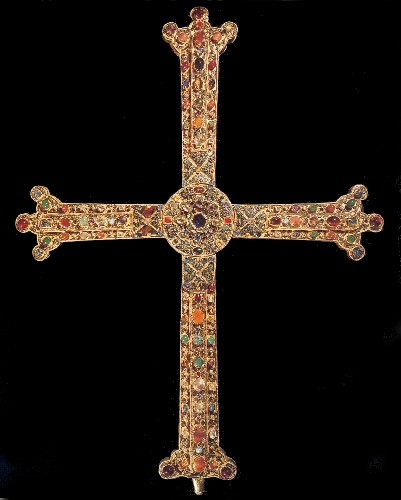Facts About Victory Cross
The Victory Cross is an intriguing artifact from the early 10th century, originating in the Asturian kingdom. King Alfonso III of Asturias bequeathed this magnificent cross to the Cathedral of San Salvador in Oviedo. Crafted in 908 at the Castle of Gauzón, the cross is steeped in legend, linking it to King Pelagius of Asturias and the renowned Battle of Covadonga. Since December 1990, the Victory Cross has been proudly displayed on the flag of the Principality of Asturias.
Initially, the cross had a simple wooden core, which is believed to have been carried by King Pelagius during the Battle of Covadonga. It was later housed in the Church of Santa Cruz de Cangas de Onís. A study conducted in 2010 dated the cross to the late 9th century. The ornate casing seen today was added in 908 and is embellished with 152 gems and imitation gems. King Alfonso III donated the cross to commemorate a century of Asturian triumphs.
Measuring 92 by 72 centimeters, the cross is a spectacular sight, adorned with gold leaf, filigree, colored enamel, pearls, precious stones, and gold thread. On the reverse side, there is an inscription listing the donors, the location, and the year of its creation.
The Victory Cross has endured its share of challenges. It was damaged during the Spanish Civil War but was meticulously restored afterward. In 1977, the cross was stolen, prompting another round of reconstruction in 1978. The cross as we see it today reflects these restoration efforts, maintaining its historical and cultural significance for future generations.

 Gibraltar
Gibraltar